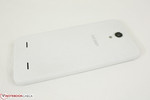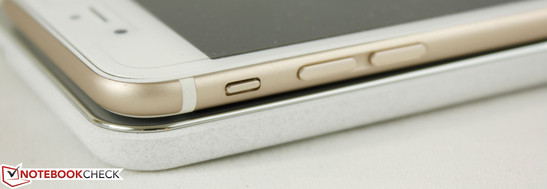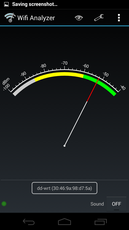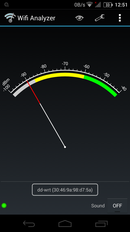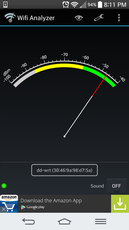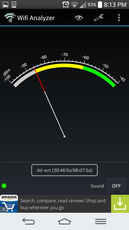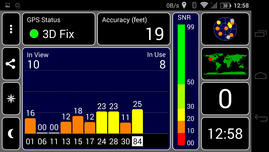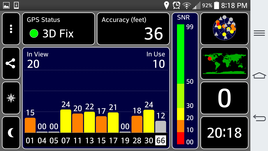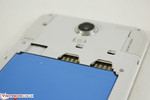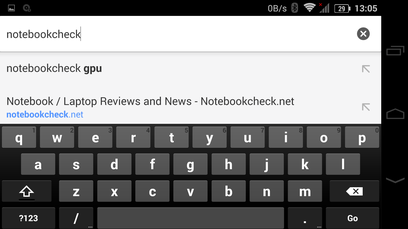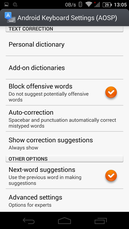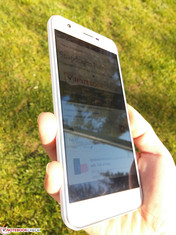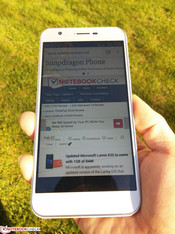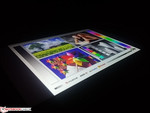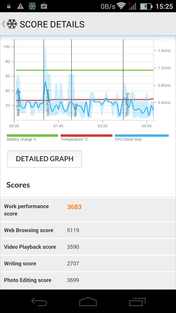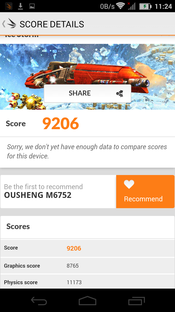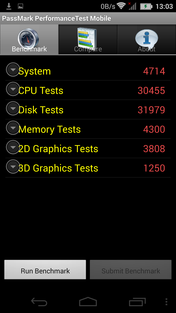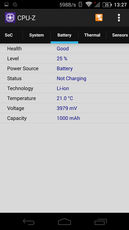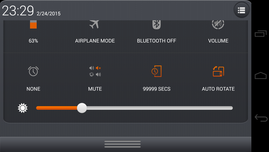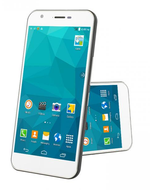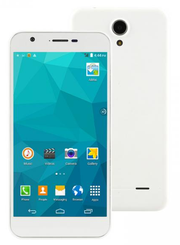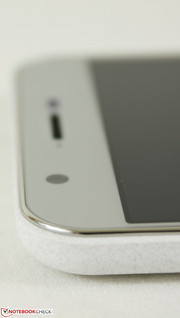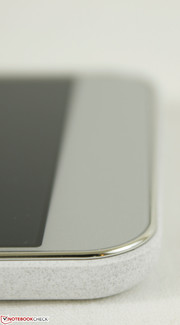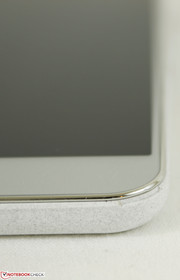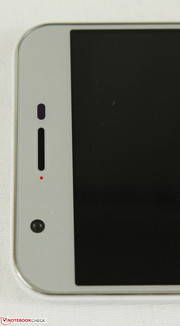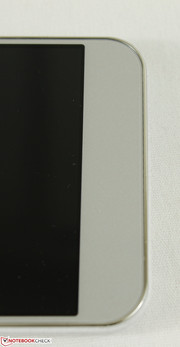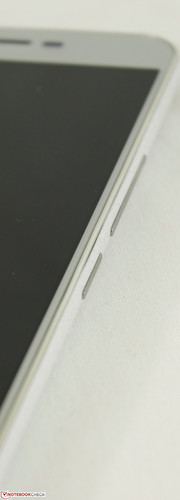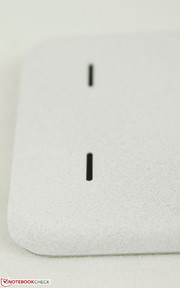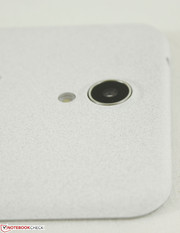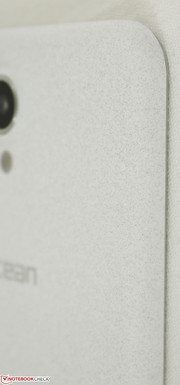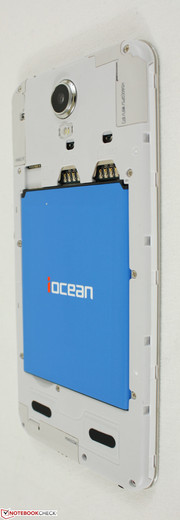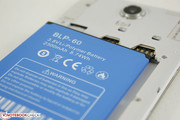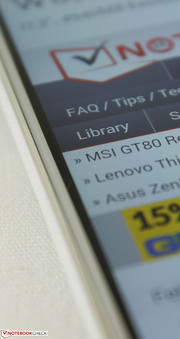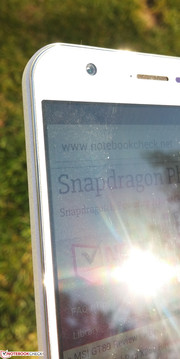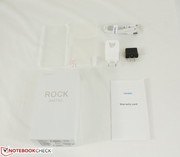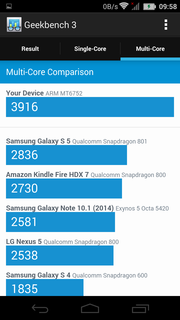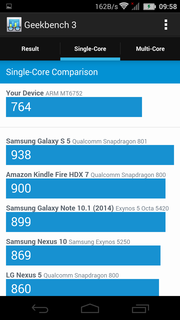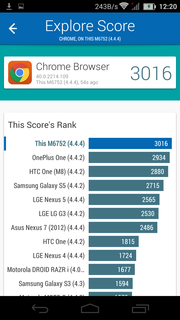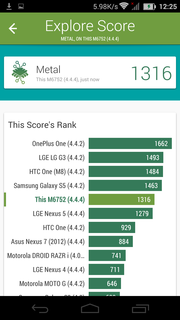iOcean M6752 Smartphone Review

Alongside brands such as Huawei and Xiaomi, iOcean is climbing the ranks as a well-known smartphone manufacturer from China. We've published on iOcean models in the past and they have proven to be a big bang for the buck in terms of display and performance.
The iOcean M6752 is the latest smartphone from the manufacturer to carry a 1080p 5.5-inch display with an uncommon-but-powerful MediaTek M6752 SoC. More notably, the device carries a whopping 3 GB of RAM with 4G support for just $216 - Definitely hard-hitting specifications for the price. We take a quick and deep look at the smartphone in our full review below.
Case
The iOcean M6752 is an attractive smartphone from front to back, especially for a budget device where the overall design typically takes a backseat. The front face feels stiff with what feels like a glass cover while the back cover emulates a sandstone texture to create a unique feel and contrast against the usual plastic, metal, or leather feel of competitors. Indeed, the matte appearance and rough feel leave a better impression than a standard plastic casing, though still a step down compared to a metal alloy solution. The reflective chrome perimeter around the front of the smartphone completes the package.
In terms of size, the iOcean is about standard for a 5.5-inch smartphone. It sits in between the iPhone 6 Plus and LG G3 in terms of length and width, yet it is thinner than the LG G3, Galaxy Note 4, and Xiaomi Redmi Note 4G. The iPhone is still slimmer at just over 1 mm thinner than the iOcean and is also certainly more dense as the iOcean is quite light at just 158 grams. A protective case is recommended (and thankfully included in the package) since the chassis just doesn't feel strong enough to withstand a fall.
Connectivity
Available interfaces include the standard micro-USB 2.0 and 3.5 mm audio ports at the bottom and top edges, respectively. USB cables connected to the port can sometimes feel loose as the thick sandstone back cover prevents cables from fully engaging the port. Removing the back cover before charging solves the problem, though the back cover itself can also be difficult to remove without fingernails or a sharp edge.
USB OTG is supported for connecting external mice and keyboards. Our test model automatically detects our Logitech devices without any issues.
Communication & GPS
Wireless connectivity includes 802.11 a/b/g/n with integrated Bluetooth and Miracast. Wi-Fi is reliable with no random drops or latency issues. W-Fi range is less than our LG G2 used for comparison as signal will drop a few meters before reaching our 20 meter point.
Meanwhile, the GPS radio will fix onto available satellites relatively quickly with no issues even without A-GPS support.
Telephone & Speech Quality
Compatible bands include 2G (GSM 850/900/1800/1900 MHz), 3G (WCDMA 850/1900/2100 MHz), and 4G (FDD-LTE 800/1800/2600 MHz, TD-LTE 1880-1920/2300-2400/2555-2655 MHz). In the U.S., the iOcean M6752 will work with AT&T, Verizon, and U.S. Cellular for 3G and phone calls. While FDD-LTE is prevalent in the states, the 4G bands that are compatible with the iOcean M6752 are not in use by the major U.S. carriers. This means that U.S. users will not receive 4G speeds, though users in Asia will likely see less compatibility issues.
Call quality is below average as LG G2 callers from the other end have noticeable static and stutters when listening through the iOcean earpiece. Similarly, the poor voice quality goes both ways as speaking through the iOcean microphone produces poor voice quality for the listener as well. The earpiece is sufficiently loud, but static becomes a major issue at higher volumes. Both the caller and receiver had full bars for reception during this test.
Cameras
The rear and front-facing cameras are advertised as 14 MP and 5 MP, respectively, but effective megapixels put actual resolution at 12 MP (4160 x 3120) and 4.7 MP (2880 x 1728) instead. Nonetheless, camera quality is good both indoors and outdoors. It’s not great, however, as there is evidence of purple fringing, image noise, and lack of sharpness, which are all common on budget cameras. The older LG G2 suffers from the same issues, but to a much lesser degree. The iOcean tends to underexpose while the LG will overexpose if lighting conditions are uneven.
Features of the rear camera include autofocus, low ISO, HDR, anti-shake, flashlight, motion-tracking, panorama mode, and many others. Videos will record up to 1080p with acceptable quality and is at its best when recording outdoors with plenty of ambient lighting.
Input Devices
Touchscreen
The 5-point capacitive touchscreen is accurate and responsive. We had no issues typing messages with no major onscreen latency delays even when typing quickly. This is in contrast to the recently reviewed 5.5-inch Verykool s5511, which would frequently miss our inputs completely around the edges and corners of the display.
The virtual keyboard is the standard Android fare and the software supports Chinese as well.
Display
The display on the iOcean M6752 is fantastic even for an inexpensive smartphone. The dense 411 PPI provides a clean picture with bright colors that pop from the screen. Maximum brightness is very bright at an average of about 550 nits, which is similar to high-end smartphones like the iPhone 6 Plus and Sony Xperia Z3, and is much brighter than competing 5.5-inch budget models from Xiaomi and Huawei. Contrast is also excellent at 1000:1 due to low black levels. Movies and videos are incredibly crisp with no significantly crushed blacks or muddy grays.
| |||||||||||||||||||||||||
Brightness Distribution: 92 %
Center on Battery: 529.6 cd/m²
Contrast: 1009:1 (Black: 0.525 cd/m²)
ΔE ColorChecker Calman: 6.23 | ∀{0.5-29.43 Ø4.78}
ΔE Greyscale Calman: 6.06 | ∀{0.09-98 Ø5}
Gamma: 2.39
CCT: 7964 K
| iOcean M6752 Mali-T760 MP2, MT6752, 16 GB SSD | Apple iPhone 6 Plus PowerVR GX6450, A8, 64 GB eMMC Flash | Xiaomi Redmi Note 4G Adreno 305, 400 MSM8928, 8 GB eMMC Flash | Samsung Galaxy Note 4 Adreno 420, 805 APQ8084, 32 GB eMMC Flash | Huawei Ascend G7 Adreno 306, 410 MSM8916, 16 GB eMMC Flash | LG G3 Adreno 330, 801 MSM8974AC, 16 GB eMMC Flash | |
|---|---|---|---|---|---|---|
| Screen | 4% | -3% | 13% | -15% | -25% | |
| Brightness middle (cd/m²) | 529.6 | 519 -2% | 446 -16% | 335 -37% | 446 -16% | 417 -21% |
| Brightness (cd/m²) | 549 | 496 -10% | 418 -24% | 339 -38% | 451 -18% | 395 -28% |
| Brightness Distribution (%) | 92 | 90 -2% | 87 -5% | 92 0% | 91 -1% | 89 -3% |
| Black Level * (cd/m²) | 0.525 | 0.62 -18% | 0.47 10% | 0.73 -39% | 0.96 -83% | |
| Contrast (:1) | 1009 | 837 -17% | 949 -6% | 611 -39% | 434 -57% | |
| Colorchecker dE 2000 * | 6.23 | 3.67 41% | 5.1 18% | 1.77 72% | 5.72 8% | 5.67 9% |
| Greyscale dE 2000 * | 6.06 | 3.78 38% | 5.93 2% | 2.06 66% | 6.16 -2% | 5.66 7% |
| Gamma | 2.39 92% | 2.42 91% | 3.46 64% | 2.41 91% | 2.19 100% | 2.53 87% |
| CCT | 7964 82% | 7327 89% | 7350 88% | 6424 101% | 7699 84% | 7741 84% |
| Color Space (Percent of AdobeRGB 1998) (%) | 99 | 59 |
* ... smaller is better
Color reproduction is good and consistent across all saturation levels according to our CalMan 5 measurements. Shades of blue are the most inaccurate while RGB balance could have been a bit flatter, but these are not major complaints on smartphones. Nonetheless, a few competing models can produce more accurate colors and grayscale across the board, such as the recently released Samsung Galaxy A5.
Outdoor usability is very good due to the high contrast and bright display backlight. We recommend setting the display to maximum brightness on a sunny day to significantly reduce glare from the glossy screen. The ambient light sensor had issues in our 2013 iOcean X7 model, but it thankfully responds swiftly and correctly on our M6752 model.
Performance
The internal hardware is reasonably powerful for a budget 5.5-inch device. Most notable is the massive amount of RAM at 3 GB, an amount that is still rare even amonst current high-end devices as of 2014. The octa-core MediaTek M6752 SoC is also an uncommon find as most budget devices tend to carry the much weaker MT6582 to save on costs. According to most synthetic benchmarks below, the 1.7 GHz M6752 is roughly 2x to 3x faster in raw speeds than the MT6582 and sits just under models with Snapdragon 800 series SoCs in system performance tests.
To save on power, the M6752 will underclock to 468 MHz if the system is idling and can disable seven of its 8 cores. All cores are able to operate at their maximum 1.7 GHz speed if required according to CPU-Z.
| Geekbench 3 | |
| 32 Bit Multi-Core Score (sort by value) | |
| iOcean M6752 | |
| Apple iPhone 6 Plus | |
| Xiaomi Redmi Note 4G | |
| Samsung Galaxy Note 4 | |
| Huawei Ascend G7 | |
| LG G3 | |
| verykool s5511 | |
| 32 Bit Single-Core Score (sort by value) | |
| iOcean M6752 | |
| Apple iPhone 6 Plus | |
| Xiaomi Redmi Note 4G | |
| Samsung Galaxy Note 4 | |
| Huawei Ascend G7 | |
| LG G3 | |
| verykool s5511 | |
| Linpack Android / IOS | |
| Multi Thread (sort by value) | |
| iOcean M6752 | |
| Apple iPhone 6 Plus | |
| Samsung Galaxy Note 4 | |
| LG G3 | |
| verykool s5511 | |
| Single Thread (sort by value) | |
| iOcean M6752 | |
| Apple iPhone 6 Plus | |
| Samsung Galaxy Note 4 | |
| LG G3 | |
| verykool s5511 | |
| Smartbench 2012 | |
| Gaming Index (sort by value) | |
| iOcean M6752 | |
| Samsung Galaxy Note 4 | |
| LG G3 | |
| verykool s5511 | |
| Productivity Index (sort by value) | |
| iOcean M6752 | |
| Samsung Galaxy Note 4 | |
| LG G3 | |
| verykool s5511 | |
| AnTuTu v5 - Total Score (sort by value) | |
| iOcean M6752 | |
| Apple iPhone 6 Plus | |
| Samsung Galaxy Note 4 | |
| LG G3 | |
| verykool s5511 | |
| AndEBench | |
| Java (sort by value) | |
| iOcean M6752 | |
| Samsung Galaxy Note 4 | |
| LG G3 | |
| verykool s5511 | |
| Native (sort by value) | |
| iOcean M6752 | |
| Samsung Galaxy Note 4 | |
| LG G3 | |
| verykool s5511 | |
| Quadrant Standard Edition 2.0 - --- (sort by value) | |
| iOcean M6752 | |
| Samsung Galaxy Note 4 | |
| LG G3 | |
| verykool s5511 | |
System Performance
Subjectively, the Android KitKat software performs admirably on the iOcean. Animations are smooth without major latency issues and multitasking works without noticeable stuttering. Scrolling and zooming through webpages are quick and responsive. There is surprisingly little to complain with regard to how the software handles.
| Mozilla Kraken 1.1 - Total (sort by value) | |
| iOcean M6752 | |
| Apple iPhone 6 Plus | |
| Xiaomi Redmi Note 4G | |
| Samsung Galaxy Note 4 | |
| Huawei Ascend G7 | |
| LG G3 | |
| LG G3 | |
| verykool s5511 | |
| Google V8 Ver. 7 - Google V8 Ver. 7 Score (sort by value) | |
| iOcean M6752 | |
| Apple iPhone 6 Plus | |
| Samsung Galaxy Note 4 | |
| LG G3 | |
| verykool s5511 | |
| Peacekeeper - --- (sort by value) | |
| iOcean M6752 | |
| Apple iPhone 6 Plus | |
| Samsung Galaxy Note 4 | |
| LG G3 | |
| verykool s5511 | |
| Browsermark - 2.1 (sort by value) | |
| iOcean M6752 | |
| Samsung Galaxy Note 4 | |
| LG G3 | |
| LG G3 | |
| verykool s5511 | |
| PCMark for Android - Work performance score (sort by value) | |
| iOcean M6752 | |
| Samsung Galaxy Note 4 | |
| LG G3 | |
| LG G3 | |
| verykool s5511 | |
* ... smaller is better
Storage Devices
The internal 16 GB of storage space allows only 12.77 GB of free space for the end-user. This is sufficient for only a handful of music and videos. Thankfully, the MicroSD slot supports up to 64 GB cards to make this iOcean a more loaded multimedia solution.
AndroBench ranks the internal SSD very highly compared to the competition with very fast sequential read and write speeds. Thus, installing and launching applications should feel a bit smoother on the iOcean.
Gaming Performance
Synthetic gaming benchmarks like Epic Citadel and 3DMark place the integrated Mali-T760 GPU alongside the Qualcomm Adreno 305 in terms of raw performance. The Adreno 305 is commonly found on the Snapdragon 400 series of SoCs, which makes this an entry-level GPU for smartphones and tablets. Nonetheless, we had no major frame rate issues when playing currently available 2D or 3D titles in the Android market, such as Order and Chaos Online.
| 3DMark Ice Storm Standard Score | 9206 points | |
Help | ||
Emissions
Temperature
Surface temperatures are flat on both the front and back when idling or under low stress conditions as most of the processing cores are disabled in this state. Heavier processing loads will raise surface temperatures on the side of the smartphone nearest the earpiece as the SoC and mainboard are likely located in this area. The bottom side of the smartphone (nearest the microphone) remains relatively unchanged.
Maximum surface temperatures peak at about 35 degrees C, which is cooler than on our previously tested iOcean devices. This means that users can handle the M6752 with comfort even under extended high loads, though one side of the device will definitely feel warmer than the other. This is in contrast to the Galaxy A5, which experiences a more even rise in surface temperatures under heavy load.
(+) The maximum temperature on the upper side is 34.6 °C / 94 F, compared to the average of 35.2 °C / 95 F, ranging from 21.9 to 247 °C for the class Smartphone.
(+) The bottom heats up to a maximum of 34.4 °C / 94 F, compared to the average of 34 °C / 93 F
(+) In idle usage, the average temperature for the upper side is 26.5 °C / 80 F, compared to the device average of 32.9 °C / 91 F.
Speakers
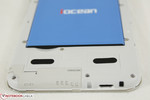
The stereo speakers on the back of the smartphone are sufficiently loud at maximum volume. Sound quality is poor, however, even by smartphone standards. Range is very narrow and high-pitched with no bass. Headphones via the 3.5 mm audio port are recommended for music and movies.
Battery Life
Power is provided by a 2300 mAh (8.64 Wh) removable Li-ion Polymer battery pack. This is slightly larger than the 2000 mAh battery packs of the 5-inch iOcean X7 and X7S models, but is significantly less than most 5.5-inch smartphones in the market including the Redmi Note 4G (3100 mAh), Galaxy Note 4 (3220 mAh), iPhone 6 Plus (2915 mAh), Huawei Ascend G7 (3000 mAh), and LG G3 (3000 mAh). Consequently, the iOcean M6752 has a noticeably shorter battery life compared to all of these examples as shown on the table below.
WLAN runtime is almost exactly 6 hours at 150 nit brightness (or about 20 percent of the maximum setting) while running our standard looping script to simulate browsing. This is long enough for a solid day of low-to-medium use, though anything more will be pushing the limit.
| iOcean M6752 Mali-T760 MP2, MT6752, 16 GB SSD | Xiaomi Redmi Note 4G Adreno 305, 400 MSM8928, 8 GB eMMC Flash | Samsung Galaxy Note 4 Adreno 420, 805 APQ8084, 32 GB eMMC Flash | Apple iPhone 6 Plus PowerVR GX6450, A8, 64 GB eMMC Flash | Huawei Ascend G7 Adreno 306, 410 MSM8916, 16 GB eMMC Flash | LG G3 Adreno 330, 801 MSM8974AC, 16 GB eMMC Flash | verykool s5511 Mali-400 MP, MT6582, 4 GB Flash | |
|---|---|---|---|---|---|---|---|
| Battery runtime | 40% | 114% | 85% | 67% | 22% | 17% | |
| Reader / Idle (h) | 9.4 | 16.4 74% | 27.8 196% | 23.9 154% | 14.2 51% | 13.7 46% | |
| WiFi (h) | 6.1 | 11 80% | 12.4 103% | 13 113% | 11.7 92% | 7.5 23% | 7 15% |
| Load (h) | 3.8 | 2.5 -34% | 5.4 42% | 3.3 -13% | 5.4 42% | 3.5 -8% | 3.4 -11% |
Verdict
The iOcean M6752 performs exceptionally well in many aspects and falls flat in a few others. Firstly, we commend the device for offering a beautiful 5.5-inch 1080p display that looks better than what the cost of the smartphone would otherwise suggest. The display backlight is also very bright and rivals the brightest smartphones currently in the market including the expensive iPhone 6 Plus and Xperia Z3 with a better-than-average camera to boot. Visibility outdoors is thus very good and better than we expected. Meanwhile, the case is well-constructed with no unintended cracks or gaps and the sandstone back cover feels a lot better than the standard cheap plastic.
Hardware performance is another bright spot as the fast internal SSD and massive 3 GB of RAM aid in multi-tasking. The experience is almost stutter-free and the large and accurate screen makes the phone very easy to use.
Some notable downsides of the iOcean M6752 include a lower than average battery life and subpar voice quality through the earpiece. U.S. users may also not get access to 4G connectivity due to incompatible 4G bands with major carriers. The manufacturer promises an Android Lollipop upgrade sometime in the near future, but the update is still MIA as of this writing. Wi-Fi calling would have been a nice feature as it is growing more common on inexpensive smartphones such as on the Aquos Crystal.
Buyers wanting a longer-lasting device and intending to make frequent calls with their smartphones may want to look at another solution. Otherwise, the iOcean M6752 offers a fantastic multimedia experience both indoors and outdoors through its outstanding display and microSD support for just $216.




